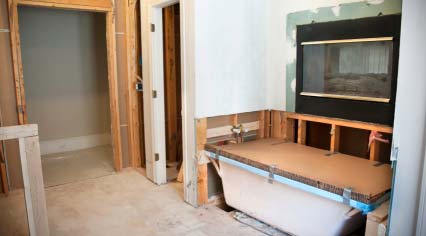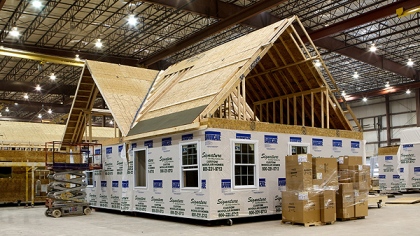Construction Loan Center
Construction to Permanent Loans and the 1031 Tax Exchange

Construction to permanent loans are a viable way of building your dream home, but, another unique way of financing the project and reaping tax benefits that you wouldn’t ordinarily receive is with the 1031 Tax Exchange program. There are very strict IRS regulations which must be adhered to. I will outline them in this article.
Use this article as a general guide and consult with your CPA for advice.
A construction loan calculator will help you calculate the actual construction loan amount.
1) The construction project and typically the property is listed as an investment property on all the documentation and the transaction must be done in someone else’s name and the must function as a Qualified Investor or Exchange Accommodation Titleholder. The title is held by the QI or EAT until the project is completed; at which time the title is transferred back to the actual owner.
2) The associated funds are held in escrow for the purposes of the new construction, but the direction of these funds is under the control of the actual owner.
3) When the construction is completed, the QI or EAT will transfer the funds to the original owner of record.
There are several things to consider when one wants to engage in a 1031 Tax Exchange program. The value of the property after the construction is completed must be equal to or greater than the original value of the property BEFORE the property is deeded back to the investor or original owner of record.
The transfer back to the original investor CANNOT take place until the construction is completed and it must take place within 180 days of completion of the construction.
All the proceeds from the equity in the original property must be used only for the new construction.
The loan amount will be critical in a transaction of this type. Here is an example of how the transaction takes place.
The original owner transfers ownership of the property to the EAT or QI. At this time, all associated funds and equity are calculated, and title is transferred:
Appraised Value $200,000
Mortgage Amount $100,000
Equity 50,000
Total Funds and Equity $15,0000
Cost of New Construction $75,000
Remaining Equity $75,000
New Loan Amount $225,000
New Appraised Value $285,000
Equity Position 21%
As you can easily see, the value of the property is higher than the original loan amount and/or the old appraised value. Because the property was held as an investment property and the new value is greater than the original value, the tax advantages are clear. Additionally, the LTV is 79% reflecting more than 20% equity in the property. My recommendation is that you consult with a tax attorney so you are receiving the full value of the program. Because the property is an investment property, you can rent it out and make money on the property, especially if the property is a duplex or multi-family dwelling. Again, a consultation with a tax attorney is strongly recommended so as to avoid an audit from the IRS.
The typical tax benefit from the exchange is a deferral of taxes, so the tax burden is non-existent until the property is relinquished or sold.






